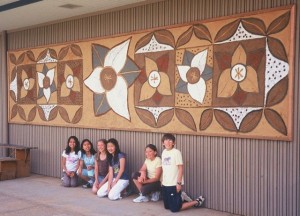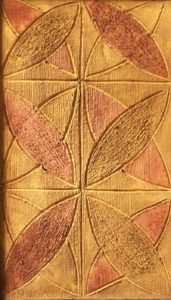Murals offer a quick and dirty way to introduce a school to the joys of mud. Unlike play sculptures and benches, they require no foundation, minimal prep, and not much mud, either. The typical approach to murals demands a narrative theme -- on my first one, I suggested "creation and the four elements" (we were working with earth, air, fire (sun), and water, after all...). It worked fine with the kids, who made something that looked much better than the industrial brick wall under it. Some parents got a bit worked up, but by the time I heard about it, a creative volunteer had welcomed . . .
Teaching with Mud, Sand, and Straw
Working with mud, sand, and straw is a way to teach geology, engineering, physics, history, drawing, composition, and design. It is also a way to teach social skills, like cooperation. But more important than just what it teaches is how it teaches: Jon Young is a wilderness educator who takes kids into the woods, and teaches them to identify and track wildlife, among other things. He cites Microsoft research suggesting that tracks in the mud were an original source of writing, that alphabets are like birdprints, and that reading a set of tracks, from a brain science point of view, is the . . .
Low-Relief Mudwork
I cut these low-relief directly into wet mud smeared on sheetrock panels. After they are finished (and dry), I apply colored washes, which also make the surface more durable. Click on the thumbnail to see the entire image, uncropped. They range in size from about 16 x 24 inches to the big mural, which is about 8 x 20 feet. All were part of an installation/show at the Bush Barn Gallery in Salem, OR, in 2004. Note the wall made of temporary gallery wall panels that we assembled into a gateway, covered with cardboard, and then plastered with mud. The finger pattern was copied directly from a . . .

